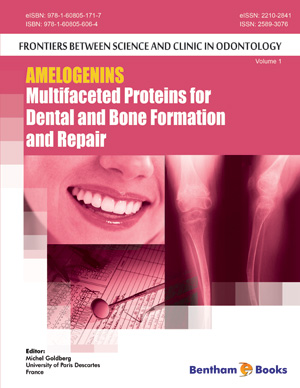Abstract
The cells that form calcified tissues produce various matrix proteins that foster a favourable environment for the regulated and structured deposition of calcium and phosphate ions into a carbonated form of apatite mineral. Differing from collagen-based calcified tissues, the organic matrix of enamel is produced by epithelially-derived cells – the ameloblasts, and consists of two major classes of proteins, amelogenins (AMEL) and nonamelogenins [1]. The AMEL class comprises full-length proteins, truncated isoforms resulting from alternative mRNA splicing, and fragments generated by extracellular proteolytic processing [1]. Enamel is distinctive from other calcified tissues because its organic matrix must ultimately be almost totally removed for it to achieve its full mineralization status. Thus, amelogenesis involves both formative and degradative processes. Studies over the past few years have revealed unexpected potentials for AMEL beyond structuring and organizing mineral at the surface of teeth, in particular their apparent capacity to influence osteogenic events. The objective of this mini-review is to highlight some key features of AMEL as related to both processes, and briefly go over our efforts to introduce enamel protein transgenes in bone forming cells.
Keywords: Amelogenins, Ameloblasts, Secretion, Degradation, Dental Mineralization, Bone Formation






















